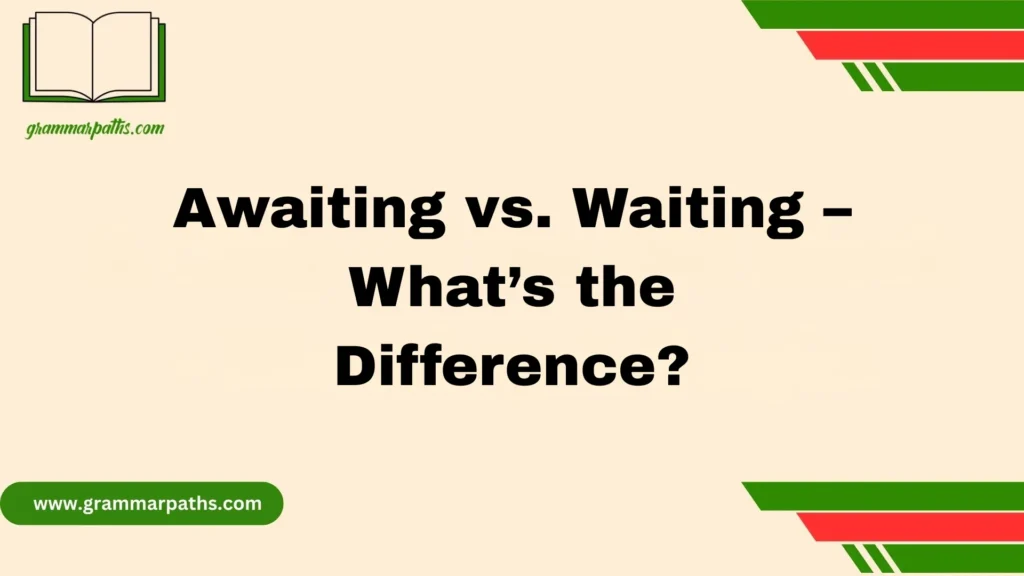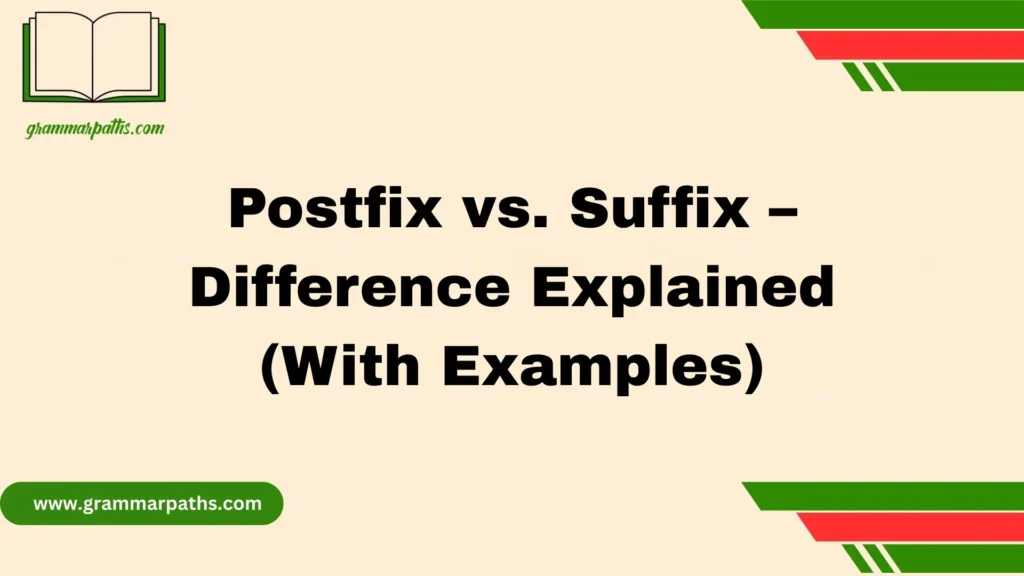Language is filled with expressions that might confuse non-native speakers, and the idiom “same difference” tops the list. At first glance, it feels like an oxymoron—how can something be the same and different? But that’s the beauty of idiomatic language. This phrase reflects the quirky, humorous, and ironic side of English.
In this article, you’ll learn everything about this curious expression—its meaning, origin, usage, examples, grammar, alternatives, pop culture references, and more. Whether you’re a language learner, a writer, or just someone who loves words, this guide will make sure you fully understand how to use “same difference” like a native speaker.
What Does “Same Difference” Really Mean?
The idiom “same difference” is used when someone wants to say that two things may appear different, but in practice or effect, they are the same. It’s often said in a casual, humorous, or even sarcastic tone.
For instance, if someone says, “That’s not a plane, that’s a jet,” the response might be: “Same difference.” This indicates that the correction is insignificant in the broader context—they’re both aircraft.
Key Takeaway:
“Same difference” = Different in form, same in function or result.
Origin and Etymology
The phrase “same difference” likely started in the early 20th century as a colloquial expression in American English. It plays off the juxtaposition of two contradictory words:
- Same (meaning identical or equal)
- Difference (meaning not the same)
Putting them together makes no literal sense—but in idiomatic English, that’s often the point. The contradiction is intentional and ironic.
While the phrase may not have a clear literary origin, it gained popularity through informal speech, particularly in comedy, movies, and day-to-day conversation.
Historical Note:
The idiom has appeared in American English dictionaries since at least the 1930s. It’s especially common in the United States, though it’s also understood in other English-speaking regions.
Breaking Down the Grammar
Grammatically, “same difference” is a noun phrase. It typically functions as a standalone sentence or part of a response. It doesn’t change form (no past tense, plural, etc.).
Usage Pattern:
- Often used as a reply or rebuttal
- Sometimes follows a correction
- Delivers a dismissive or humorous punchline
Examples:
- “That’s not teal, that’s turquoise.”
– “Same difference.” - “It’s not a walk, it’s a hike.”
– “Same difference.”
Tone and Context
The tone of “same difference” is typically:
- Casual
- Lighthearted
- Playful
- Sarcastic (depending on the situation)
You would rarely—if ever—use this idiom in a formal setting, academic paper, or business email.
Common Use Cases
Let’s explore the real-world situations where “same difference” fits perfectly:
1. Trivial Corrections
When someone points out a small error that doesn’t change the outcome.
Example:
“You said it was 9 miles, but it’s 9.3.”
Response: “Same difference.”
2. Casual Conversations
Friends talking about unimportant distinctions.
Example:
“It’s a latte, not a cappuccino.”
“Same difference. It’s still coffee.”
3. Dismissive Response
To downplay or reject a correction without argument.
Example:
“You meant Tuesday, not Wednesday.”
“Same difference. The meeting’s still at noon.”
4. Teasing or Sarcasm
To lightly mock someone who’s overly specific or technical.
Example:
“It’s not a tablet, it’s an iPad.”
“Same difference, tech nerd.”
Examples in Pop Culture
“Same difference” has made its way into movies, songs, comedy shows, and even branding.
TV Shows:
- Friends – Characters like Joey and Chandler use it in humorous exchanges.
- The Office (US) – Michael Scott often uses idioms incorrectly, but occasionally hits “same difference” right.
Music:
- Several bands and albums use “Same Difference” as a title.
- Lyrics often feature it to imply irony or resignation.
Books:
- Authors use the phrase in dialogue to reflect real speech and casual tone.
List of Sample Sentences
| Scenario | Sentence Using “Same Difference” |
| Clothing | “It’s navy, not black.” – “Same difference.” |
| Weather | “It’s drizzling, not raining.” – “Same difference, I’m still soaked.” |
| Directions | “Take the left street, not the middle.” – “Same difference, they merge anyway.” |
| Names | “It’s Katie, not Kate.” – “Oops, same difference.” |
| Food | “That’s not a muffin, it’s a cupcake.” – “Same difference, it’s still sweet.” |
Why Is “Same Difference” Effective?
This idiom works because it communicates:
- Efficiency – It ends the conversation quickly
- Humor – The contradiction makes it funny
- Indifference – It signals you don’t care about the details
- Relatability – Everyone has brushed off small corrections before
It’s often used to defuse conflict, lighten the mood, or show a relaxed attitude.
Similar Idioms and Alternatives
If you want to switch it up, here are some synonyms and phrases that express the same idea:
| Idiom/Expression | Use Case |
| “Makes no difference” | General use, slightly more formal |
| “It’s all the same to me” | Expresses indifference |
| “No big deal” | Casual way to downplay an issue |
| “Six of one, half a dozen of the other” | When two options are basically equal |
| “Tomato, to-mah-to” | Highlights small differences in pronunciation or terms |
| “Close enough” | Used when precision isn’t important |
When You Should NOT Use It
While “same difference” is useful, it can come across as:
- Dismissive
- Sarcastic
- Passive-aggressive
So it’s important to know when not to use it.
Avoid in:
- Job interviews
- Academic essays
- Professional disagreements
- Technical discussions
In those cases, consider saying something like:
“I see your point,” or “That’s a fair distinction.”
Cultural Relevance
In the U.S., the idiom is well-known. It appears in:
- Slang dictionaries
- Social media posts
- YouTube skits
- Teen dramas
But be cautious if you’re speaking with non-native English speakers or people from other cultures who might not catch the ironic tone.
How to Teach This Idiom (ESL Use)
For English learners, this phrase is a great introduction to irony in language.
Teaching Tips:
- Use visual comparisons (e.g., Coke vs. Pepsi)
- Create dialogue practice
- Explain tone and informality
- Show humorous video clips
Learning to use “same difference” properly helps learners develop a natural, fluent sound in conversation.
Fun Exercise: Create Your Own
Try writing your own “same difference” dialogue.
Person A: “That’s not a cat, it’s a kitten.”
Person B: “Same difference—it still sleeps 18 hours a day.”
Challenge yourself to come up with 5 more!
FAQs:
What is the idiom for differences?
The idiom “a world of difference” means two things are extremely different. It highlights a clear contrast between two people, opinions, or situations that share no similarity.
What type of phrase is the same difference?
“Same difference” is an oxymoron idiom. It combines opposite ideas—“same” and “difference”—to humorously say that two things are basically alike, even if they look different.
What is the idiom for the same situation?
The idiom “in the same boat” means being in a similar or identical situation, usually one that’s difficult or challenging, where everyone shares the same problem or outcome.
What is the idiom make a difference?
To “make a difference” means to cause a noticeable change or positive impact in a situation, often used to describe efforts that improve lives, results, or outcomes meaningfully.
How do you say big difference?
Use the idiom “night and day” to describe a big difference. It compares two things that are completely opposite, emphasizing the drastic contrast between them.
Conclusion: Why “Same Difference” Still Matters
“Same difference” is one of those idioms that continues to thrive because it’s relatable, versatile, and a little bit cheeky. It allows us to move past nitpicking and focus on the bigger picture. Whether you’re using it to diffuse tension, make someone laugh, or simply avoid a debate, it’s a phrase that works across generations and settings—as long as it’s casual.

Grace Marie is the dedicated writer behind GrammarPaths.com, where she shares her passion for English grammar, idioms, and writing mastery. With a strong background in language studies and years of experience helping learners improve their communication skills, Grace creates clear, practical, and engaging content that makes English easy to understand.










